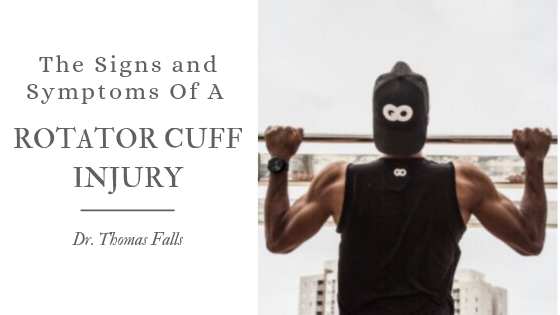The rotator cuff is actually a group of tendons and muscles surrounding the shoulder joint, as opposed to a single body part. This group of muscles is responsible for keeping the upper arm bone inside the shoulder socket. The rotator cuff encompasses four muslces: teres minor, subscapularis, infraspinatus, and the supraspinatus. Unfortunately, the rotator cuff is also fairly prone to injury, especially in people who are frequently active. Those who regularly do heavy lifting in their jobs and those who use repetitive overhead motions are most susceptible to these kinds of injuries, though a rotator cuff injury can happen to anyone. The risk of an injury to the rotator cuff does increase as a person ages. While most people will recover with physical therapy and rehabilitation, the area can be permanently weakened and flexibility lost.
There are many signs and symptoms that a rotator cuff has been injured. The first will be the experience of a dull ache in the shoulder, which worsens when the person lies on it or attempts to raise that arm above their shoulder. This aching can gradually (or quickly, depending on the specific cause of the injury) turn into sharp pains; swelling and inflammation may also occur, especially when a tear or tendinitis is involved. Throbbing and pain may also occur at night, which can be severe enough to prevent a night of restful sleep. Tendinitis, characterized by acute redness, inflammation, and swelling, is another possible result of trauma or injury to the rotator cuff.
Rotator cuff tendinitis, or just tendonitis, can occur over a period of time. Symptoms of rotator cuff tendinitis can include a clicking noise when raising your arm, stiffness in your arm or shoulder area, pain reaching behind your back or reaching upward. Forms of physical therapy, steroid injections, or surgery can help alleviate pain and restore a full range of motion for the patient.
Sometimes, the pain from tendinitis or a rotator cuff tear may be felt further down the arm. This is due to the location of the nerves that pass through the area. Some people may not experience pain at all, and the severity of the tear (i.e. partial versus complete) may not seem to correlate with what the person is actually feeling. This is often the case with tendinosis, a chronic condition caused by trauma or injury to the area. The important distinction between tendinitis and tendinosis is that tendinosis is chronic pain, where tendinitis is acute pain with inflammation. Normally, tendinosis will not have inflammation around the affected area. It’s important that, if any pain or discomfort is noticed, the person gets checked by a doctor and takes it easy, in order to prevent further damage. Only a doctor will be able to differentiate between a tear, tendonitis, tendinosis, and other conditions. After an assessment, he/she will be able to suggest a course of action, which may include surgical repair, tendon transfer, and/or, in severe cases, complete joint replacement.\

